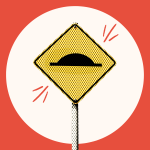Orchialgia
Orchialgia is a medical term for long-lasting pain in one or both testicles. It can cause a deep aching or sharp pain, can affect one or both testicles (or alternate between sides), may get worse with activity, and it doesn’t always have an obvious cause. Common reasons for testicular pain include injuries, infections or nerve problems. Sometimes, it can also be linked to stress or muscle tension (particularly in the muscles of the pelvic floor). If the pain doesn’t go away or gets worse, it’s important to see a doctor. They can check if there’s a serious issue and help find the right treatment.
Testicular torsion
Testicular torsion is a serious condition that happens when a testicle twists inside the scrotum, cutting off its blood supply. This can cause sudden, severe pain and swelling, and it usually happens on one side. It’s most common in teenage boys and can happen after an injury or even during sleep. If you ever get sudden testicle pain, especially with nausea or swelling, you need to go to a doctor or hospital straight away. Testicular torsion is an emergency, and if it’s not treated quickly — usually with surgery — it can lead to permanent damage or even the loss of the testicle.
Injury
Testicular injury or trauma happens when the testicles get hit, crushed, or stretched, usually from sports, accidents, or falls. This can cause sharp pain, swelling, and bruising. Most injuries heal on their own with rest, ice, and pain relief. In some cases, a serious injury like a rupture (tear) or internal bleeding can happen, which may need surgery. If the pain is severe, lasts longer than an hour, or comes with swelling or nausea, it’s important to see a doctor. Wearing a protective cup or box during sports can help prevent injuries and keep everything safe.
Infection
Pain can occur when bacteria or viruses cause infection in the testicles or the tube behind them (the epididymis). This can make the scrotum red, warm, and tender, can cause fever, or a burning feeling when peeing. Infections can be caused by bacteria from urinary tract infections (UTIs) or sexually transmitted infections (STIs). Most infections can be treated with antibiotics, rest, and pain relief, but if the pain is severe or doesn’t get better, it’s important to see a doctor. Getting treatment early helps prevent complications and speeds up recovery.
Inguinal hernia
An inguinal hernia happens when part of the intestine pushes through a weak spot in the muscles between the belly and the upper thigh, creating a lump in the groin or scrotum. It can cause discomfort, pain, or a heavy feeling, and be more noticeable when lifting, coughing, or standing for a long time. Sometimes, the lump goes away when lying down. While small hernias might not be serious, larger ones can cause problems like trapped intestines, which need emergency surgery. If you notice a lump or pain in your groin or scrotum, it’s best to see a doctor. Surgery is often needed to fix a hernia and prevent complications.
Subscribe to our newsletter

Kidney stones
Kidney stones can sometimes cause testicular pain because the nerves in the kidneys, bladder, and testicles are connected. When a stone moves through the tubes that carry urine it can cause sharp pain in the lower back or side, which may spread to the groin and testicles. This pain can come and go in waves and might be worse when peeing. Some people also feel nausea or need to go to the toilet more often. If you ever have sudden, severe pain in your back, side, or testicles, it’s a good idea to see a doctor to check if a kidney stone is the cause.
Varicocele
A varicocele is when the veins inside the scrotum get larger and swollen, similar to varicose veins in the legs. Varicoceles are usually painless but they can cause a heavy feeling or dull ache, especially after standing for a long time or during exercise. Sometimes, a varicocele can make one testicle smaller, or the scrotum might feel like a “bag of worms”. Varicocele is usually not dangerous, but it is associated with infertility. If it causes pain or other problems, a doctor can suggest treatments, including minor surgery if needed.
Hydrocele
A hydrocele happens when fluid builds up around a testicle, making the scrotum look swollen or feel heavy. It’s usually painless, but if the hydrocele gets too big, it can cause discomfort or a dull aching feeling in the testicles, especially after standing or being active for a long time. Hydroceles can develop after an injury, infection, or even without a clear reason. They’re usually harmless and might go away on their own, but if they cause pain or get too large, a doctor can drain the fluid or do a simple surgery to remove it. If you notice swelling in your scrotum, it’s always good to get it checked.
Testicular cancer
Testicular cancer happens when cells in the testicle grow abnormally, forming a lump or swelling. It is usually not painful but there can be a dull ache or discomfort. Testicular cancer is rare, but it is the most common cancer in males aged 20-39, so it’s important to pay attention to any changes like lumps, hardness in the testicle or an increase in size. If you notice any of these signs, seeing a doctor as soon as possible is key, because catching it early makes it easier to treat and more likely that it will be cured.
Chronic pelvic pain syndrome (CPPS)
CPPS is a condition where you have long-lasting pain in the lower abdomen, groin, or testicles, without a clear cause like an infection. The pain can feel dull, sharp, or achy and may come and go over time. CPPS can sometimes be caused by pelvic floor muscle tension, stress, or inflammation, or it might be linked to other conditions like prostatitis. Along with testicular pain, people with CPPS might also feel discomfort when urinating or after sitting for a long time. It’s important to see a doctor for a proper diagnosis and treatment plan, which may include physical therapy, medication, or lifestyle changes.
If you're experiencing sore testicles see your doctor as soon as possible.













